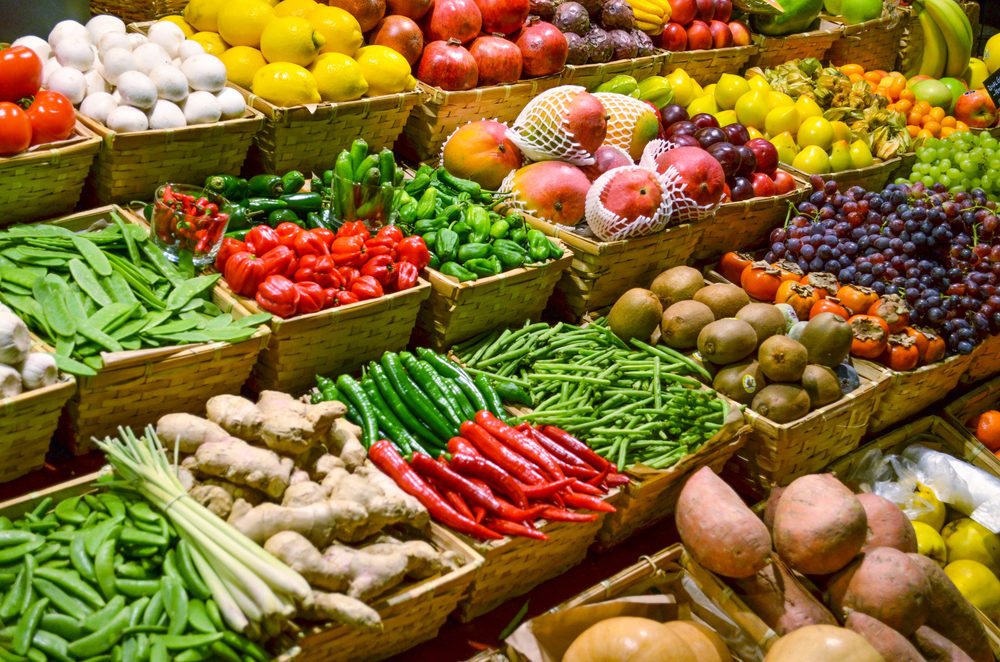Environmentalists List a Dozen Produce Products Linked to High Pesticide Exposure Risks
Strawberries top environmental activist’s list of produce with the highest levels of pesticides, with 99% of samples testing positive for the chemicals.

Nearly 75% of all non-organic, fresh produce is contaminated with residues of potentially harmful pesticides, according to a recent report by a prominent consumer advocacy group.
The Environmental Working Group (EWG) released its annual Shoppers Guide to Pesticides in Produce report on March 20, indicating thousands of fresh fruits and vegetables contain traces of hormone-disrupting chemicals, even after washing and peeling them.
The group analyzed 47,510 pesticide test samples of 46 fruits and vegetables conducted by the U.S. Department of Agriculture (USDA) and the U.S. Food and Drug Administration (FDA). While the USDA peeled and scrubbed produce samples before testing, and the FDA removed dirt, both agencies identified traces of 254 different pesticides.
Environmentalist’s “Dirty Dozen” List
Among the produce test samples, researchers identified 12 fruits and vegetables with the highest levels of pesticide contamination, finding that 95% contained the chemicals. The EWG also released the 2024 Dirty Dozen list on March 20, warning produce on the list contain 209 different pesticides.
The fruits and vegetables contaminated with the most pesticides include strawberries, spinach, kale, collard, mustard greens, grapes, peaches, pears, nectarines, apples, hot and bell peppers, cherries, blueberries, and green beans.
More than 50 pesticides were identified from samples of produce on the “dirty dozen” list, and at least one sample from each type of produce contained as many as 23 chemicals. Environmentalists indicate that over 90% of strawberries, apples, cherries, spinach, nectarines and grapes tested positive for residues of at least two or more pesticides.

Did You Know?
Millions of Philips CPAP Machines Recalled
Philips DreamStation, CPAP and BiPAP machines sold in recent years may pose a risk of cancer, lung damage and other injuries.
Learn MoreAccording to the report, kale, collard, and mustard greens contained the most pesticides, with 103 different chemicals, followed by hot and bell peppers, with 101. However, strawberries remain at the top of the pesticide contamination list because 99% of samples had detectable levels of chemicals, even after they were washed.
The most common pesticides identified through sample testing include, fludioxonil, pyrimethanil, pyraclostrobin, and boscalid fungicides. Fludioxonil was identified in 30% of all samples and 90% of peaches, and pyrimethanil was detected in 54% of pears. Pyraclostrobin was found in more than 10% of all samples, and in nearly 50% of strawberries and cherries. Nearly half of blueberry samples contained boscalid, and the fungicide was detected in more than 50% of cherries and strawberries.
Testing found another concerning chemical among green beans. Acephate, a toxic insecticide that was banned in 2011, was detected in 6% of green bean samples.
Pesticide Exposure Health Risks
The environmentalist group indicates these fungicides may disrupt hormones and have the potential to cause harmful health conditions. While more research is needed to understand the health risks these chemicals pose to humans, prior studies have found that fludioxonil acts like the hormone estrogen, which increases growth of breast cancer cells and may harm male reproductive systems.
Previous studies also suggest pyrimethanil exposure may block androgen receptors, which can affect the way the body responds to hormones. The EWG indicates other research has linked it to thyroid disruptions.
Some studies have shown pyraclostrobin may be associated with liver toxicity and the development of certain metabolic disorders, environmentalists say. Boscalid was also associated with hormone disruptions in animal studies, linking exposure to cancer and thyroid dysfunctions.
While the EWG notes that the health benefits of eating plenty of fresh produce outweighs the risks of pesticide exposure, it recommends consumers purchase the organic versions of items on the “dirty dozen” list to lessen those risks.
Consumers can refer to the group’s “Clean Fifteen” list to view fresh produce items with the least amount of pesticide residues.
Get more articles like this sent directly to your inbox.
"*" indicates required fields





0 Comments